The Beauty of Math Patterns: Exploring Mathematical Sequences
Explore the fascinating world of math patterns, from Fibonacci sequences to fractals. Read our blog to learn more.
1. "Ten Black Dots" by Donald Crews
2. "One Hunter" by Pat Hutchins
3. "The Very Hungry Caterpillar" by Eric Carle
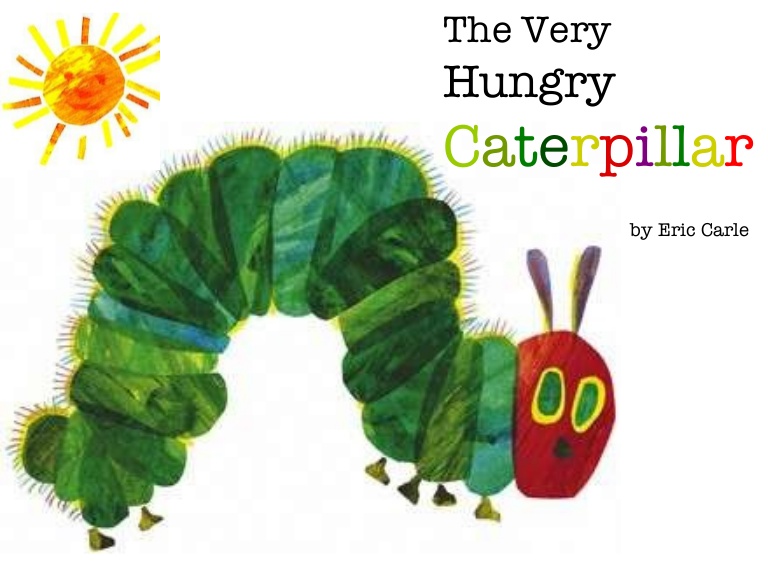 Young children enjoy reading these stories repeatedly, which encourages them to practice counting.
Young children enjoy reading these stories repeatedly, which encourages them to practice counting.
4. "Five Little Monkeys" by Eileen Christelow
This story introduces counting backward and subtraction as part of a whimsical story. It has an easy-to-memorize pattern, so your child “read” it independently.5. "The Grouchy Ladybug" by Eric Carle
This fun story explores the math concepts of time, size and shape.6. "100 Hungry Monkeys" by Masauki Sebe
Entertaining pictures show 100 monkeys to help children understand this important number. Ages 6-8: Imaginative Play Children this age love to use their imagination and play games, so we included books with stories or games in this age group.1. "Ten for Me" by Barbara Mariconda
This book uses a story to show how to use tally marks, show data collection, and combinations of 10.2. "Do Not Open this Math Book" by Danica McKellar
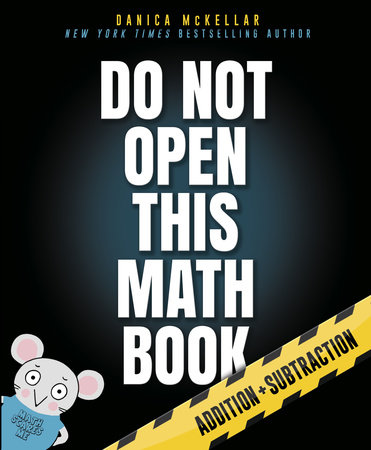 Children cannot resist “disobeying” the front cover. Once they open the book, they learn and enjoy the cartoons of Mr. Mouse and the author.
Children cannot resist “disobeying” the front cover. Once they open the book, they learn and enjoy the cartoons of Mr. Mouse and the author.
3. "Alexander, Who Used to Be Rich Last Sunday" by Judith Viorst
As you read about Alexander’s disappearing “fortune,” help your child figure out how much money he has left.4. "A Million Dots" by Mike Clements
This picture book shows what a thousand and a million look like, giving kids a way to conceptualize large quantities.5. "Annika Riz, Math Whiz" by Claudia Mills
This short chapter book uses a fun character who notices that math is all around her.6. "The Sunday Scoop" by Stuart J. Murphy
Kids love this book because it talks about a favorite food. We love it because introduces the concept of combinations. Ages 9-11: Humorous Math Tales Children this age are developing a sophisticated sense of humor. They are also learning some difficult math concepts, such as negative numbers, fractions and decimals. These books illustrate these concepts in a humorous way.1. "Piece=Part=Portion/Fractions=Decimals=Percents" By Scott Gifford
The pictures show the challenging concept “wholes and parts” in unique ways.2. "Less than Zero" by Stuart J. Murphy
This simple story introduces negative numbers in a way that is easy to understand.3. "The Monster who Did My Math" by Danny Shnitzlein
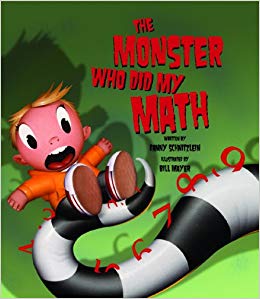 This story illustrates how succeeding in math takes practice and a good attitude.
This story illustrates how succeeding in math takes practice and a good attitude.
4. "A Very Improbable Story" by Edward Einhorn
The premise of this story is—as the title suggests—improbable. A boy, and the cat stuck on his head, discover that life is full of probability problems.5. "How Many Guinea Pigs Can Fit on a Plane?" by Laura Overdeck
Kids who love to ask, “What would happen if …?” will love this book. The math questions in this book (and the related series) are ridiculous, and that appeals to this age group.6. "Sir Cumference and the Dragon of Pi — A Math Adventure" by Cindy Neuschwander
This book is full of delightful characters with “punny” names. The main character goes on a quest in which he must figure out how to measure a circle. Ages 12-14: Acknowledging their Maturing Minds Pre-teens and teens have moved beyond having math as part of a story. We choose books that make math fun, not like extra schoolwork.1. "Kiss my Math — Show Pre-Algebra Who’s Boss" by Danica McKellar
This book uses a format and style resembling a teen fashion magazine to explain math concepts.2. "The Wollstonecraft Detective Agency: The Case of the Missing Moonstone"
3. "The Wollstonecraft Detective Agency: The Case of the Girl in Grey"
These are the first two books in a four-part series by Jordan Stratford, which imagines an alternate history in which Ada Lovelace (the world’s first computer programmer) and Mary Shelley (author of Frankenstein) meet as girls and form a secret detective agency.4. "How Math Works: 100 Ways Parents and Kids Can Share the Wonders of Mathematics" by Carol Vorderman
5. "Math and Logic Puzzles that Make Kids Think" by Jeffrey Wanko
6. "300+ Mathematical Pattern Puzzles" by Chris McMullen
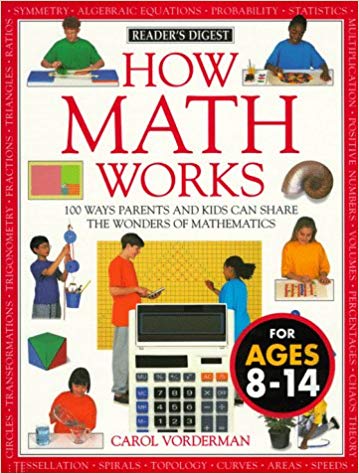 Working as a team to solve the puzzles in these books will stretch you and your child to think in innovative ways.
Ages 15 and up: Ask their Opinion
Older teenagers are ready to explore math in ways beyond what they hear in a high school math class.
If your teen is unaccustomed to reading with you, you may need a new approach. Try picking out one of the books from this list, and start reading it or doing the puzzles yourself. As you come across an interesting idea or a challenging puzzle, read that section out loud to your teenager. Ask them for their opinion on what they just heard. These discussions may spark their curiosity about the book. Leave the book where they can see it, so they can pick it up if they feel inspired.
Working as a team to solve the puzzles in these books will stretch you and your child to think in innovative ways.
Ages 15 and up: Ask their Opinion
Older teenagers are ready to explore math in ways beyond what they hear in a high school math class.
If your teen is unaccustomed to reading with you, you may need a new approach. Try picking out one of the books from this list, and start reading it or doing the puzzles yourself. As you come across an interesting idea or a challenging puzzle, read that section out loud to your teenager. Ask them for their opinion on what they just heard. These discussions may spark their curiosity about the book. Leave the book where they can see it, so they can pick it up if they feel inspired.
1. "The Moscow Puzzles: 359 Mathematical Recreations" by Boris Kordemsky
This classic puzzle book has entertained high school students from around the world for many years.2. "The Teen Money Manual—A Guide to Cash, Credit, Spending, Saving, Work, Wealth and More" by Kara McGuire
3. "The Motley Fool Investment Guide for Teens — 8 Steps to Having More Money than your Parents Ever Dreamed of" by David Gardner and Tom Gardner
The two books above help teens understand the fundamentals of managing money wisely.4. "The (Fabulous) Fibonacci Numbers" by Alfred Posamentier and Ingmar Lehmann
5. "Here’s Looking at Euclid—A Surprising Excursion Through the Astonishing World of Math" by Alex Bellos
6. "Finding Zero" by Amir D. Aczel
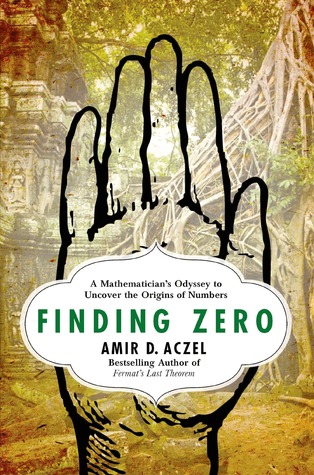 These three books explore historical, philosophical and creative aspects of math.
Many of the books on this list have authors who wrote several books about math. If you and your child enjoy a book by a particular author, or if you can’t find a particular title, try another book by that author.
Are you ready to start? Grab a book, snuggle up, and get started on a great math book adventure with your children!
Whether you're looking high school math tutoring or a kids math program, Mathnasium is the nation's leading math-only math learning center.
{{cta('f7209585-d16e-4187-b521-69774f15de42')}}
These three books explore historical, philosophical and creative aspects of math.
Many of the books on this list have authors who wrote several books about math. If you and your child enjoy a book by a particular author, or if you can’t find a particular title, try another book by that author.
Are you ready to start? Grab a book, snuggle up, and get started on a great math book adventure with your children!
Whether you're looking high school math tutoring or a kids math program, Mathnasium is the nation's leading math-only math learning center.
{{cta('f7209585-d16e-4187-b521-69774f15de42')}}


Mathnasium meets your child where they are and helps them with the customized program they need, for any level of mathematics.
